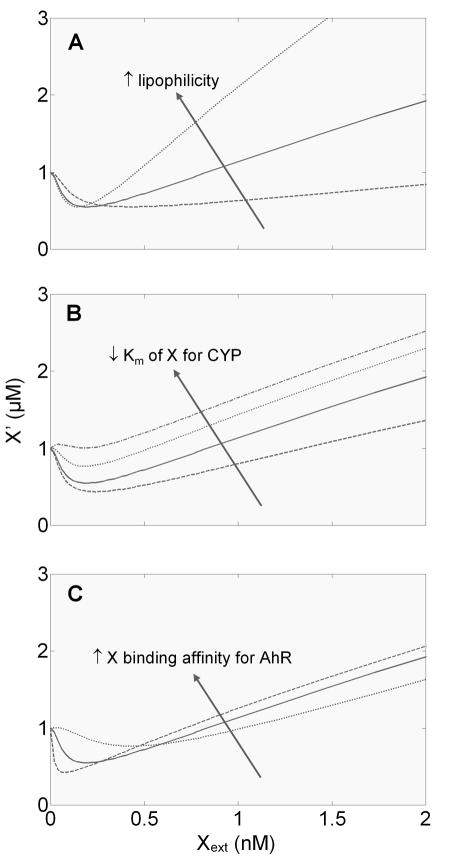Figure 7.
Effects of physical/chemical properties of xenobiotic X on the shape of the steady-state dose response curve for reactive metabolite X′ vs. extracellular xenobiotic X (Xext). (A) An increase in the lipophilicity of X tends to reduce the width of the hormetic zone and nadir dose, without affecting the depth of the hormetic zone. Changes in lipophilicity were implemented by varying the diffusion rate constants (k1f, k1b, k4f, and k4b, which all assume equal values) for crossing the cell and nuclear membrane to the following values: 20, 100 and 500 s−1. (B) A decrease in the Michaelis-Menten constant (K7m) of X for phase I enzyme CYP tends to reduce the width and depth of the hormetic zone. The parameter values used here are 400, 100, 25, and 10 nM. (C) An increase in the binding affinity of X for its receptor tends to increase the depth and reduce the width of the hormetic zone, as well as reduce the nadir dose. Changes in the binding affinity were implemented by simultaneously varying the association rate constants (k2f and k5f, which assume equal values) to the following values: 0.001, 0.004, and 0.02 nM−1s−1. These values give dissociation constant of 10, 5, and 1 nM, respectively.

